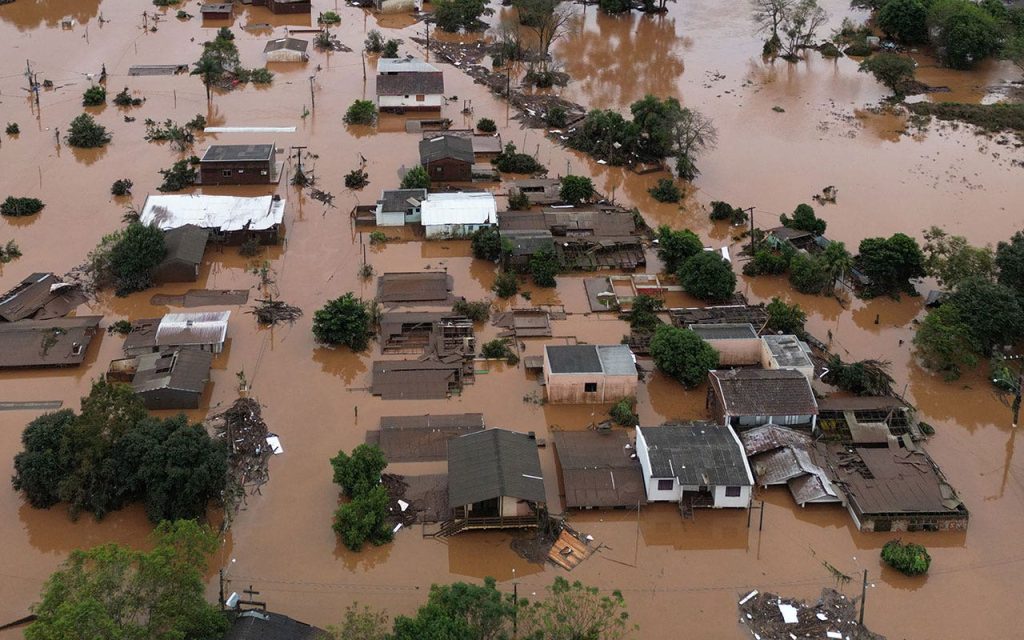Heavy rains in Brazil’s Rio Grande do Sul state have resulted in 31 confirmed deaths, with the toll expected to rise. More than 70 people remain missing, and approximately 17,000 have been displaced. Nearly half of the state’s 497 cities have been affected, with streets turning into rivers, roads and bridges destroyed, landslides, and dam structure collapses reported. A second dam in Bento Goncalves is also at risk of collapsing, prompting evacuations in the area. Governor Eduardo Leite described the situation as the most critical case the state has ever faced, with the death toll expected to increase as authorities have not been able to reach certain locations.
President Luiz Inacio Lula da Silva visited the affected areas in Rio Grande do Sul and discussed rescue efforts with the governor. The heavy rains and flooding in the state have caused significant devastation, leaving many towns underwater and communities cut off by the rising waters. The situation is dire, with authorities working tirelessly to locate missing individuals and provide assistance to those displaced by the disaster. The impact of the severe weather is widespread, affecting nearly half of the state’s cities and prompting concern over the stability of dam structures in the region.
The heavy rains in Brazil’s southernmost state have also caused a significant loss of life, with 31 confirmed deaths reported as a result of the severe weather. The death toll is expected to rise as authorities continue search and rescue operations for those still missing. More than 70 individuals remain unaccounted for, adding to the urgency of the situation. The widespread flooding and landslides have posed challenges for first responders, who are working around the clock to reach affected communities and provide assistance to those in need.
The state’s civil defense confirmed that the heavy rains have displaced approximately 17,000 people, with many forced to flee their homes as the waters continue to rise. The impact of the flooding on infrastructure has been severe, with roads, bridges, and dam structures damaged or destroyed by the extreme weather conditions. The situation in Rio Grande do Sul is unprecedented, with Governor Eduardo Leite describing it as the most critical case the state has ever faced. The full extent of the damage caused by the heavy rains and flooding is still being assessed as rescue efforts continue.
Authorities have issued evacuation orders for areas at risk of dam collapses, including in the city of Bento Goncalves, where a second dam is under threat. The unstable dam structures pose a significant danger to nearby residents, prompting urgent evacuations to ensure their safety. President Luiz Inacio Lula da Silva’s visit to the affected regions highlights the severity of the situation and the need for coordinated rescue and relief efforts. As the death toll continues to rise and more areas are affected by the heavy rains, the Brazilian government is mobilizing resources to support communities in crisis and provide assistance to those in need.
The heavy rains and flooding in Rio Grande do Sul underscore the devastating impact of extreme weather events on vulnerable communities. The loss of life, displacement of thousands of people, and destruction of homes and infrastructure highlight the urgent need for preparedness and resilience in the face of climate-related disasters. As Brazil grapples with the aftermath of the severe weather, the government, local authorities, and first responders are working together to address the immediate needs of those affected and to mitigate the long-term impacts of the disaster. In the face of such widespread devastation, solidarity and support from the international community will be crucial in helping Brazil recover and rebuild in the wake of this tragedy.


